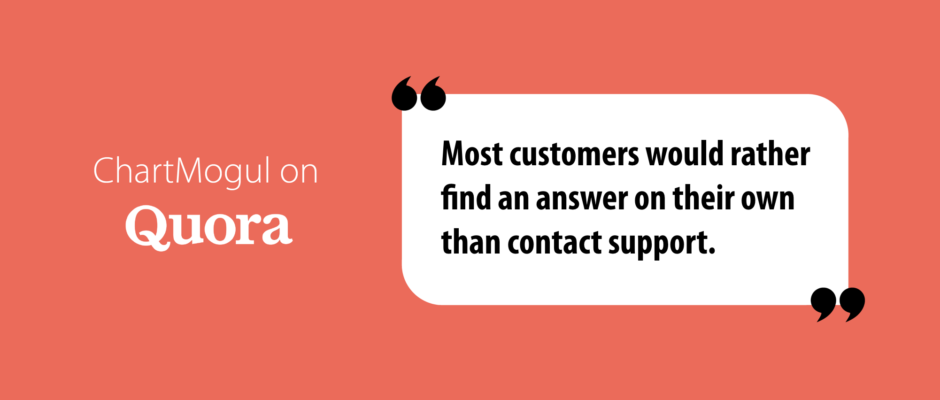Consider how crucial customer success and retention are to SaaS growth and profitability. If your customer support system can help keep a customer happy, engaged, and onboard — and keep that revenue recurring — then the money invested in customer support is worth it. Of course it’s also worth it to keep your customer support lean and efficient.
What’s normal?
There’s likely not such a thing as a “typical amount” that SaaS companies spend on support. SaaS companies are all different in terms of their size and product offering, as well as the volume and complexity of the questions they receive.
The most useful answer would probably be some comparison between companies as to what percentage of expenditure goes to customer support, though it’s unclear where this data is available. As a point of reference, though, Totango recommends spending 1 to 2 percent of revenue on customer success programs. Whether customer support falls under the larger umbrella of customer success in your organization, and how you prioritize those two programs, factors into how you might budget for customer support specifically.
Other factors that impact your customer support budget are below… followed by some ideas to help lower those costs, too.
Here are some of the main factors determining customer support costs:
- If real-time channels such as live chat and voice are offered or just email (voice is more expensive than email).
- The volume of incoming requests.
- The complexity of incoming requests.
- The location of the company and its support team: real estate, salaries, all of the costs impacted by the cost of living in a particular city.
And here are a number of ways to reduce customer support costs:
- Track the most frequently asked questions. Then make changes to your product or website so people don’t need to ask the questions in the first place. e.g.- Put information directly on the corresponding page, change UI so the next step is more intuitive, etc. This makes for happier customers, too!
- Make support self-service. If it isn’t possible to make a question obsolete through product/site improvements, then add the answer to your FAQs/knowledge base. Maintaining a thorough, accurate FAQ is key — most customers would rather find the answer on their own than take the time to contact a support member.
- Design your site so that users must search your FAQ/knowledge base before submitting a support request. This tactic is known as “ticket deflection” or “case deflection”.
- Maintain an up-to-date library of canned responses to common questions that you support staff can have at-the-ready. This keeps the team more efficient. (If your team uses real-time channels such as live online chat and phone calls, have them send these canned responses as follow-up emails to the customer, too. This reinforces the answer and hopefully the customer will absorb the information better.)
- You could move all or part of your support operation to a lower cost region. E.g. the midwest United States, or even SE Asia (for really low cost).
This answer was originally published on Quora. View the original thread here:
How much do SaaS companies typically spend on customer support?
Share and follow!
NEW on @ChartMogul: #SaaS Q&A: How much should you spend on customer support? https://t.co/BApUbxfCzA pic.twitter.com/JkJAkpjf0N
— ChartMogul (@ChartMogul) March 31, 2016
